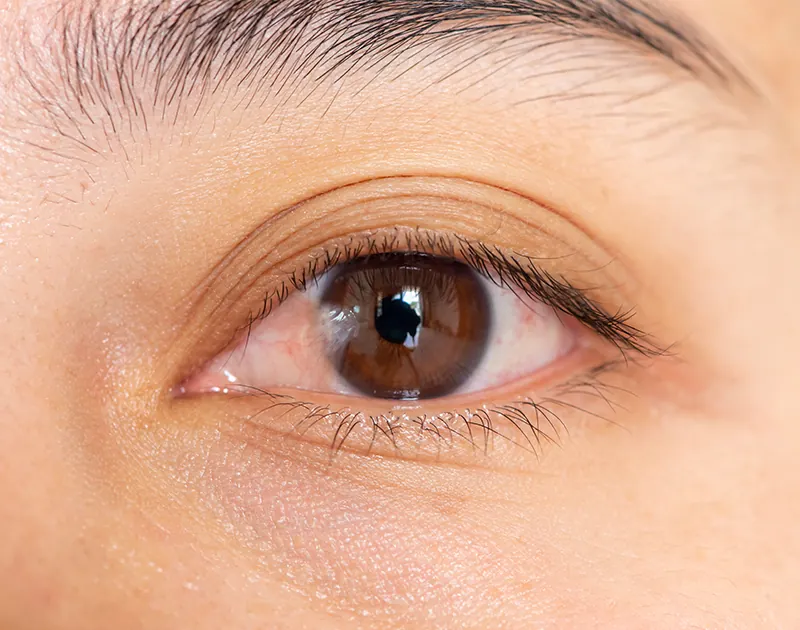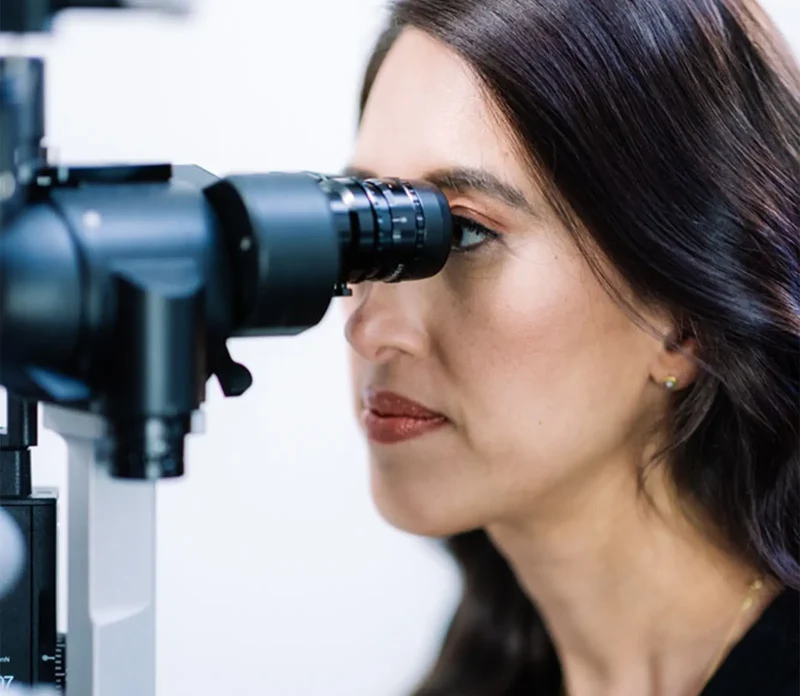
Pterygium
Pterygium
If you’ve noticed a fleshy growth on your eye, you may be dealing with pterygium, also known as surfer’s eye. This common condition can cause redness, irritation, and, in some cases, interfere with vision. While often harmless, a pterygium can continue to grow over time, affecting both eye health and appearance. At Focus Eye Care & Surgery, we provide expert evaluation and treatment for pterygium, offering relief and solutions tailored to your needs. Whether it’s discomfort, cosmetic concerns, or changes in vision, our team in Queens and Long Island is here to help you see clearly and comfortably.

A pterygium, also known as surfer’s eye, is a non-cancerous growth of fleshy tissue on the conjunctiva, the clear membrane covering the white part of the eye. It often starts near the inner corner and can gradually extend toward the cornea, sometimes affecting vision. The growth may appear whitish, pinkish, or yellowish, with visible blood vessels. While many pterygia cause no symptoms, some can lead to redness, irritation, or cosmetic concerns.
Pterygium Symptoms
A pterygium is usually a painless condition. It is considered more of an aesthetic issue when the tissue overgrowth has not obscured the pupil or vision. Usually, people with pterygium experience the following symptoms:
- Mild discomfort such as a burning sensation, tearing, itching, and foreign body sensation
- Astigmatism due to the tissue overgrowth over the cornea that may cause blurring of both distant and near vision
- Reddish or pinkish discoloration of the tissue overgrowth that may be of cosmetic concern to the patient
- If the pterygium advances further to obscure the pupil, then vision may be affected.

Pterygium Causes and Risk Factors
The exact cause of pterygium is not known, but studies have indicated UV radiation exposure to be a major risk factor for pterygium. People living near the equator have higher incidences of pterygium, which may be due to exposure to windy, sunny, or dry climates. Genetic preponderance to pterygium has also been suggested by some studies to be a risk factor.
Pterygium Treatment
A pterygium is usually treated symptomatically to provide relief from the symptoms. Symptoms such as foreign body sensation, burning, tearing, and itching can be effectively managed with artificial tears. If the pterygium progresses further to obscure vision, then surgical removal of the pterygium may be essential. Also, should the pterygium progress further, surgery must be done early on to avoid the potential of corneal scarring.
However, surgery is usually not done unless absolutely necessary to avoid unnecessary complications. A technique called conjunctival auto-grafting is done in those patients requiring surgical removal of pterygium. In conjunctival autograft surgery, the bare sclera that is exposed after removal of the pterygium is covered by a conjunctival graft from a healthy part of the patient’s own conjunctiva.

Faqs About Pterygium
In some cases, a pterygium may gradually resolve on its own without treatment. But, in most cases, pterygium usually does not go away on its own. Minimizing the risk factors of pterygium such as exposure to sun, wind, and sand can help prevent pterygium progression. By minimizing scleral irritation and with enough time, the pterygium may go away on its own. But, if the pterygium is advancing further toward the cornea, you must have it removed early on to minimize the risk of corneal scarring.
A pterygium can grow further out to cover a significant portion of the cornea. This can cause severe corneal scarring. Corneal scarring may then lead to blindness. This is the worst-case scenario for pterygium and is not common. The possibility of pterygium leading to blindness is minimal, but it is still present.
No, a pinguecula is not the same as pterygium. A pterygium is a tissue overgrowth that grows toward the cornea in a triangular shape, but a pinguecula does not cover the cornea and is limited to the sclera.
Although the exact cause of pterygium is not known, there are several risk factors that have been associated with pterygium. The most important risk factor for pterygium is sunlight exposure or UV-ray exposure. Other risk factors for pterygium are wind and sand. People living in tropical areas are prone to developing pterygium due to frequent exposure to windy, sandy, or sunny climates. Genetics has also been implicated as an important risk factor for pterygium.
Prevention of pterygium from occurring in the first place or preventing it from worsening may be possible with adequate protection from exposure to sunlight, wind, and sand. Using sunglasses to protect the eyes or wearing wide-brimmed hats may both be effective to minimize the risk of pterygium.
Pterygium is a benign tumor that does not affect areas beyond the cornea and sclera. The risk of pterygium spreading to distant areas is zero. The worst possible outcome of pterygium is loss of vision in the affected eye if the pterygium covers the pupil or if it causes corneal scarring.


Schedule a Consultation
If pterygium is causing discomfort or affecting your vision, the team at Focus Eye Care & Surgery is here to help. We offer expert diagnosis and treatment to protect your eye health and restore comfort. Schedule a consultation at our Queens or Long Island locations to explore your options and get the care you need.
The doctors at Focus Eye Care & Surgery have reviewed and approved this content.
Page Updated:


